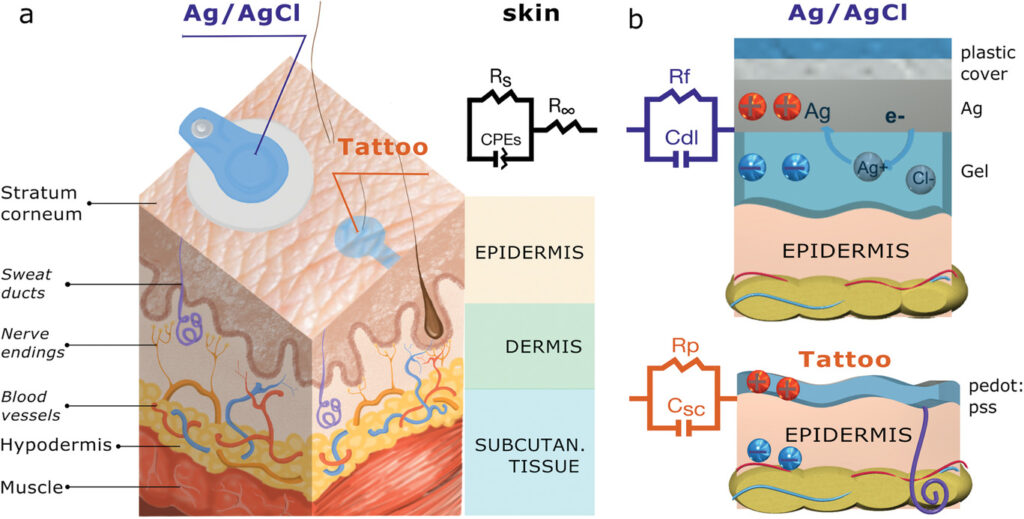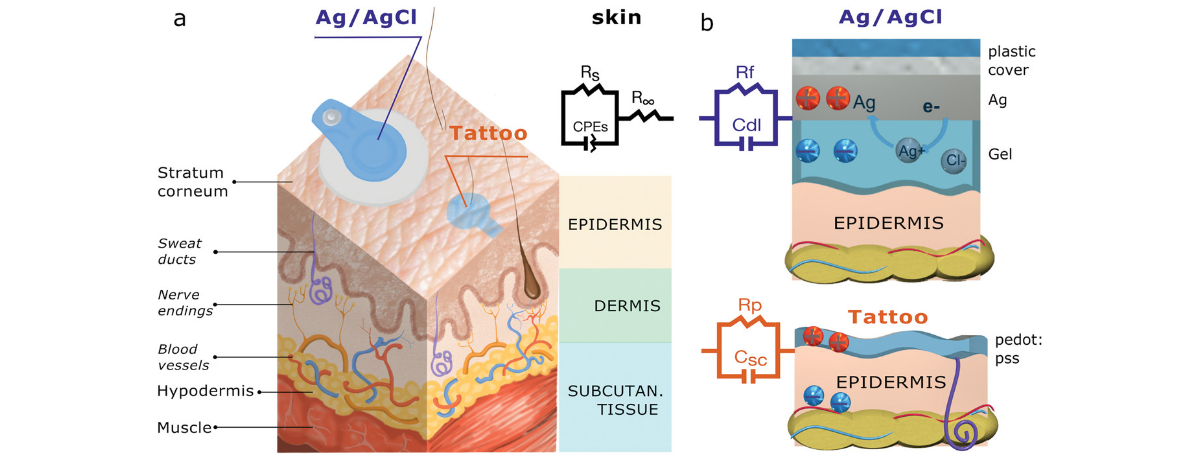“Capacitive Coupling of Conducting Polymer Tattoo Electrodes with the Skin”

Laura M. Ferrari, Usein Ismailov, Francesco Greco, Esma Ismailova
Publication Date: July 10, 2021
https://onlinelibrary.wiley.com/doi/10.1002/admi.202100352
Abstract
Tattoo electronics is one of the emerging technologies in skin compliant biosensing. The growing interest in their large application in health monitoring raises several interrogations on how these sensors interface with the skin. In this paper, the bioimpedance at the interface of the skin and ultra-conformable tattoo electrodes made of conducting polymers are focused on. The electrochemical characteristics of these electrodes differ from traditional gelled Ag/AgCl electrodes. The modeling of equivalent circuits in different skin-electrode configurations proposes the explanation of the biopotentials transduction mechanism. The strong agreement between the circuit model and experimental values reveals the capacitive coupling of conducting polymer tattoo electrodes where circuit’s values reflect the electrodes’ and skin physical characteristics. Additional studies underline an enhanced signal stability in inter/intra-subject evaluations using dry tattoos beneficial for broad long-term recordings. This study provides a comprehensive explanation of the skin/tattoo electrode interface model. The understanding of this interface is essential when designing next generation wearable biomonitoring devices using imperceptible interfaces.

